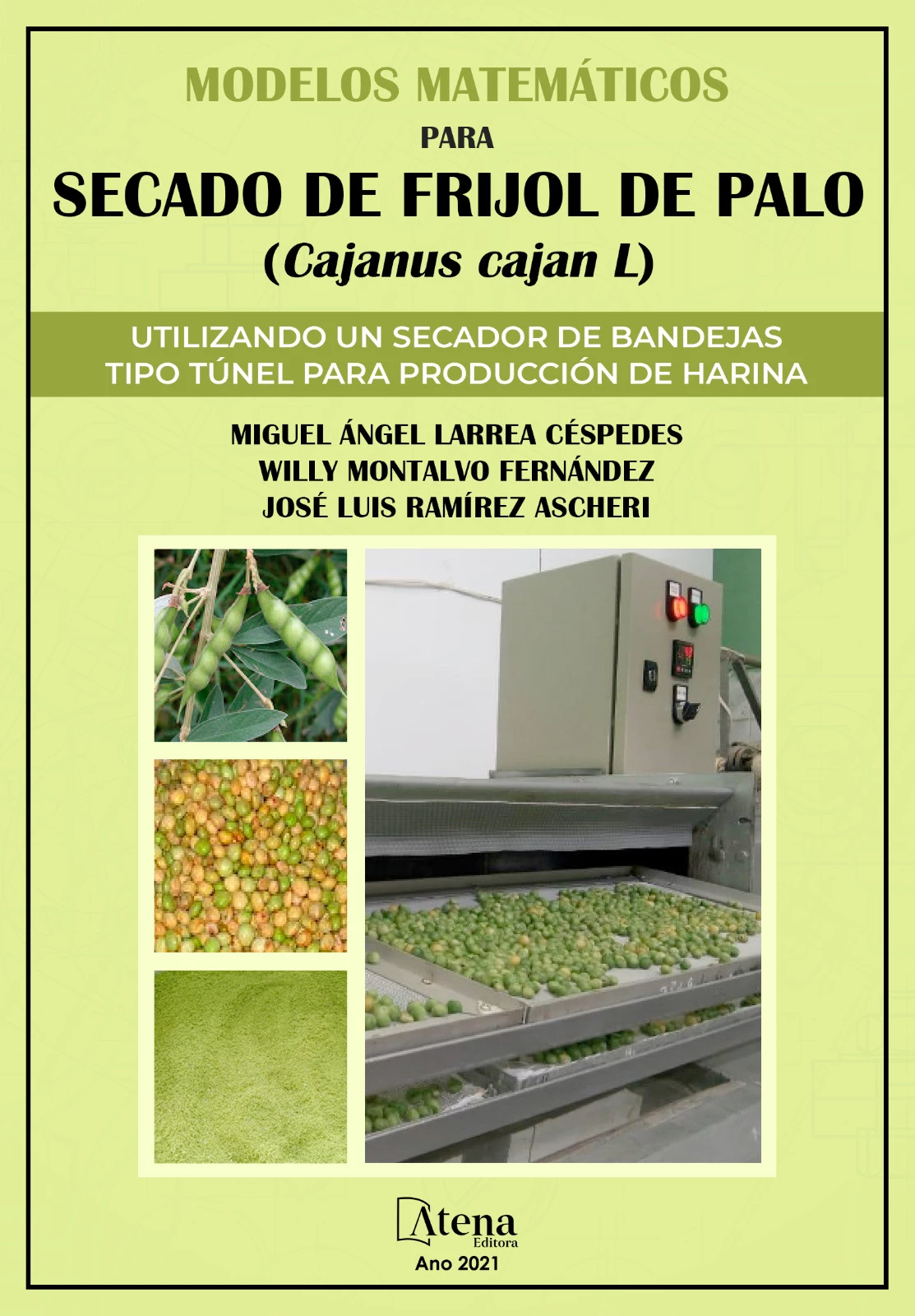
Modelos Matemáticos para Secagem de Feijão guandu (Cajanus cajan L) Utilizando Secador de Bandeja Túnel para Produção de Farinha.
Os grãos de feijão guandu (Cajanus cajan L), foram submetidos a um processo de secagem e posterior moagem para a produção da farinha, em secador de bandejas tipo túnel, para atingir uma umidade que permitisse preservar as características do produto obtido. Propriedades funcionais, tais como: índice de absorção de água (IAA) e índice de solubilidade em água (ISA). Posteriormente, a farinha de feijão obtida foi utilizada para fazer biscoitos em substituição à farinha de trigo. Durante o estudo foi utilizado um delineamento fatorial 33. As variáveis independentes estudadas foram: temperatura de secagem (45°C, 50 °C, 55 °C); tempo de secagem (6 horas, 9 horas e 12 horas); velocidade do ar de secagem (5,0, 5,5 e 6,0 m/s). As melhores condições operacionais durante o processo de secagem foram: 45,0 °C; 6,7 horas e 6,0 m/s. Essas condições permitiram que o teor de umidade fosse reduzido em 52,36%; finalmente fixando-se em 11,87%. Os resultados também mostraram modificações nos teores do índice de absorção de água, cujo valor foi de 4,563 g água / g matéria seca; a 45 °C, 6,5 horas, 6,0 m/s. O índice de solubilidade em água foi estabelecido em 15,413% a 45 °C; 12 horas e 6,0 m/s. por fim, o estudo mostrou ser possível obter biscoitos de qualidade tecnológica aceitável substituindo 15% da farinha de trigo por farinha de feijão guandu.
Modelos Matemáticos para Secagem de Feijão guandu (Cajanus cajan L) Utilizando Secador de Bandeja Túnel para Produção de Farinha.
-
DOI: 10.22533/at.ed.073221301
-
Palavras-chave: Leguminosas, secagem, modelo matemático, biscoitos, propriedades funcionais.
-
Keywords: Legumes, drying, mathematical model, cookies, functional properties.
-
Abstract:
Pigeonpea (Cajanus cajan L), were subjected to a drying process and subsequent grinding for the production of flour, using a tunnel-type tray dryer, in order to reach a humidity that allowed to preserve the characteristics of the product obtained. Modify some functional properties, such as water absorption index (WAI) and water solubility index (WSI). Subsequently, the bean flour obtained was used to make cookies by substituting wheat flour. During the study, a factorial delineation 33 was used. The independent variables studied were: Drying temperature (45 °C, 50 °C, 55 °C); drying time (6 hours, 9 hours and 12 hours); drying air speed (5.0, 5.5 and 6.0 m/s). The best operational conditions during the drying process were: 45.0 °C; 6.7 hours and 6.0 m/s. These conditions allowed the moisture content to be reduced by 52.36%; finally being established at 11.87%. The results also showed modifications in the contents of the water absorption index, whose value was 4.563 g water / g dry matter; at 45 °C, 6.5 hours, 6.0 m/s. The water solubility index was established at 15.413% at 45 °C; 12 hours and 6.0 m / s. Finally, the study showed that it is possible to obtain cookies of acceptable technological quality by substituting 15% of wheat flour for stick bean flour pigeonpea.
-
Número de páginas: 56
- Miguel Ángel Larrea Céspedes
- Willy Montalvo Fernández
- JOSÉ LUIS RAMIREZ ASCHERI


